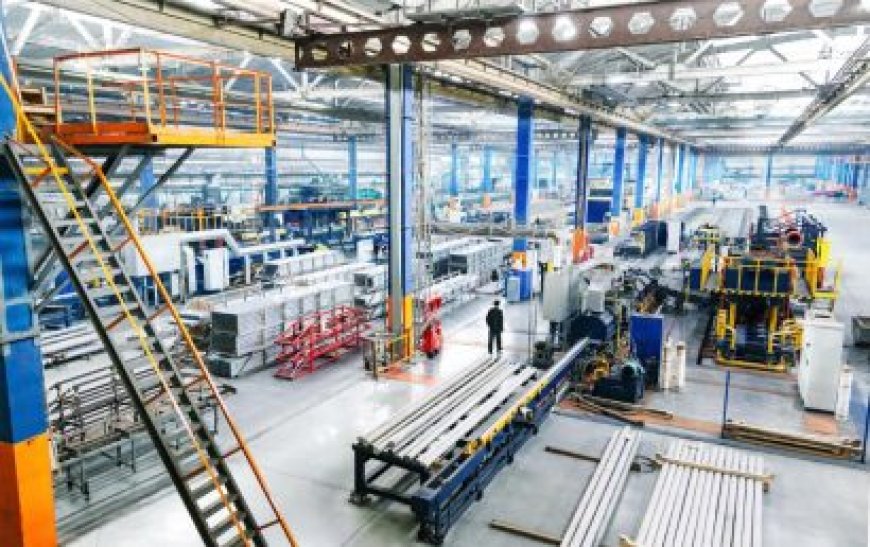What You Need to Know About Thermal Spray Powder Coating Techniques
Thermal spray powder coating is a versatile and widely-used method in industrial applications, offering protective and functional coatings for a variety of surfaces. Whether you're in aerospace, automotive, or manufacturing, thermal spray technology provides a reliable solution for improving surface properties such as wear resistance, corrosion protection, and thermal insulation. But what exactly is thermal spray powder coating, and what are its techniques? Here, we'll dive into the core principles, techniques, and applications of thermal spray coating.

What is Thermal Spray Powder Coating?
Thermal spray powder coating is a process where molten or semi-molten materials are sprayed onto a surface to form a protective or functional layer. This method can utilize a wide range of materials, including metals, ceramics, plastics, and composites. The coatings can be applied in varying thicknesses, depending on the intended use, and are typically used to protect substrates from wear, corrosion, oxidation, or even high temperatures.
The basic principle involves heating the coating material (in powder form) until it becomes molten or semi-molten, then propelling it onto a substrate to form a solid coating upon cooling. The bond strength of the coating to the substrate is often mechanical, though in some cases, metallurgical or chemical bonding may occur.
How Does the Process Work?
Thermal spray processes generally follow similar steps:
Preparation of the substrate: The substrate surface is cleaned and roughened to ensure the proper adhesion of the coating material. This is typically done using methods like sandblasting or chemical etching.
Heating the coating material: The coating material, which is in the form of a powder, wire, or rod, is heated to a molten or semi-molten state using a heat source such as a plasma, electric arc, or flame.
Application of the coating: The molten or semi-molten material is then sprayed onto the prepared surface using a carrier gas (like compressed air). Upon contact with the substrate, the droplets flatten and rapidly cool, forming a solid, continuous coating.
Post-processing: After the coating has been applied, additional processes such as polishing or sealing may be required to improve the coating's surface finish or enhance its properties.
Key Thermal Spray Techniques
There are several methods of thermal spray powder coating, each suited for different applications and materials. The most commonly used techniques include:
1. Plasma Spray
Plasma spray is one of the most versatile thermal spray techniques. In this method, a plasma arc is used to melt the powder material, which is then propelled at high speeds onto the substrate. The high temperatures generated by the plasma arc make it suitable for a wide range of materials, including ceramics, metals, and even certain polymers. Plasma spraying is commonly used in industries like aerospace and automotive, where high-performance coatings are required.
2. High-Velocity Oxygen Fuel (HVOF) Spray
HVOF spraying uses a combination of fuel and oxygen to produce a high-velocity combustion jet. The powder material is fed into this jet, where it is heated and accelerated towards the substrate. The high velocity of the particles results in a dense and strong coating, which makes HVOF suitable for applications requiring wear and corrosion resistance. Industries like oil and gas, as well as marine applications, often use HVOF to coat parts exposed to harsh environments.
3. Flame Spray
Flame spraying is one of the oldest and simplest thermal spray techniques. In this process, a fuel gas (such as acetylene) and oxygen are burned to create a flame, which melts the coating material (usually in powder or wire form). Although flame spray coatings are not as dense as those produced by plasma or HVOF, they are often more cost-effective for less demanding applications, such as agricultural equipment or general-purpose machinery.
4. Electric Arc Spray
Electric arc spraying is a process in which two consumable wires, usually made of metal, are electrically charged and brought together to create an arc. The arc melts the wire material, which is then sprayed onto the substrate using compressed air. This technique is particularly useful for applying metallic coatings, such as zinc or aluminum, for corrosion protection in industries like construction or infrastructure maintenance.
Advantages of Thermal Spray Powder Coating
Thermal spray powder coating offers several advantages over other coating techniques, making it a popular choice for various industries:
Versatility: A wide range of materials can be used, including metals, ceramics, and composites. This allows for tailored coatings to meet specific requirements.
Thickness control: Coatings can be applied in various thicknesses, from a few microns to several millimeters, depending on the application.
Durability: Thermal spray coatings are known for their toughness, providing excellent wear and corrosion resistance.
Cost-effectiveness: While some methods like HVOF can be costly, other techniques such as flame spray offer economical solutions for less demanding applications.
Minimal heat impact: The process does not significantly heat the substrate, which reduces the risk of thermal distortion or damage to sensitive materials.
Applications of Thermal Spray Coating
Thermal spray powder coatings are used in many industries and applications, including:
Aerospace: To improve wear resistance and thermal insulation of turbine blades, landing gear components, and engine parts.
Automotive: To protect pistons, cylinders, and other engine components from wear and corrosion.
Oil and Gas: For protecting pipes, valves, and pumps from corrosion in harsh environments.
Medical Devices: In the production of biocompatible coatings for implants and surgical tools.
Power Generation: For coating gas turbines and other high-temperature equipment.
Conclusion
Thermal spray powder coating techniques offer unparalleled flexibility and performance across a wide range of industries. Whether you need to enhance surface durability, protect against corrosion, or manage high-temperature environments, there’s likely a thermal spray solution that fits your requirements. By understanding the different methods available, you can choose the appropriate technique for your specific application, ensuring long-lasting and reliable performance.
What's Your Reaction?
























